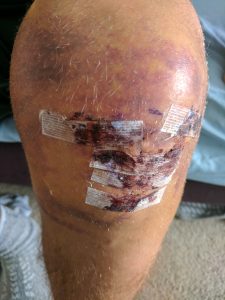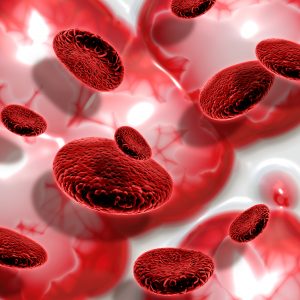
We’ve been talking a lot about the “off-label” uses of HBOT lately, so here’s some information about one of the few FDA, Medicare, and commercial insurance-approved conditions for the use of hyperbaric oxygen therapy (HBOT) – the treatment of non-healing foot wounds in Diabetics. Backed by a series of scientific studies demonstrating a significant reduction in major amputations HBOT was approved by Medicare in 2003.
Hyperbaric oxygen therapy has been shown to be an effective method for treating diabetic foot wounds. Studies involving a significant number of patients have shown a high success rate in patients who had been unsuccessful with other modes of therapy. This treatment results in lower medical costs and better outcomes than standard wound care alone. Patients feel that HBOT is an effective treatment and reported that they were satisfied with how their ulcers healed and that this improved their quality of life.
There is a substantial daily burden of care and emotional weight associated with living with diabetic foot ulcers, both of which are compounded by concern regarding possible amputation. Every year 12-24% of diabetes foot wounds result in amputation; this is over 60% of all non-traumatic amputations in the U.S. Diabetics are 15 to 40 times more likely to have a leg amputated than someone not suffering from the disease.
Amputation also puts the diabetes patient at risk for foot wounds on the opposite leg and eventual bilateral amputation. According to the CDC, diabetes related neuropathy with wounds has a relapse rate of 66% over 5 years, and 12% of people with wounds progress to amputation.
“Research shows that after 20 to 30 treatments, patients will have new blood vessels in their damaged tissues along with other improved conditions necessary for wound healing, including collagen production. Even if the wound is not completely healed, the new blood supply allows the healing process to continue even after therapy ceases. Radiation tissue injury is more severe and may require additional treatments – as many as 60 sessions – but treatments result in new healthy tissue that continues to heal after the hyperbaric oxygen therapy ends.” ~ Dr. Michael Meadors, medical director

“Over a course of about 30 treatments new vessel growth infiltrated the wound and achieved pO₂’s of about 85% of control tissue. Similar HBOT angiogenesis has been achieved in animals by Manson (2), Rohr (3), Meltzer (4), Nemiroff (5), Zhao (6), and others. This is the underlying basis of all HBOT in chronic wounding and accounts for the ability to heal diabetic foot wounds, arterial insufficiency ulcers, traumatic ischemic wounds, burns, and other devascularized wounds, providing major arterial supply is not severely decreased.” ~ Dr. Paul Harch
The Mayo Clinic states, “In a hyperbaric oxygen therapy chamber, the air pressure is increased up to three times higher than normal air pressure. Under these conditions, your lungs can gather more oxygen than would be possible breathing pure oxygen at normal air pressure. Your blood carries this oxygen throughout your body. This helps fight bacteria and stimulate the release of substances called growth factors and stem cells, which promote healing. Your body’s tissues need an adequate supply of oxygen to function. When tissue is injured, it requires even more oxygen to survive. Hyperbaric oxygen therapy increases the amount of oxygen your blood can carry. An increase in blood oxygen temporarily restores normal levels of blood gases and tissue function to promote healing and fight infection.”
HBOT is one of the safest treatments in health care, but there are some cautions for diabetic patients. HBOT has a hypoglycemic effect, reducing blood glucose levels an average of 50 mg/dL during treatment. Caregivers must check the patient’s blood glucose level before and after each treatment and postpone treatment if the pretreatment blood glucose level is 100 mg/dL or lower. There are also some diabetic medications that can be affected by HBOT, so always talk to your doctor and be sure your HBOT provider knows about your diabetes.
Is HBOT right for you? The experts at Hyperbaric Oxygen Therapy of Western New York can answer your questions and address any concerns you may have. Visit us at www.02wny.com or call us: (585) 426-8969

Recent Comments